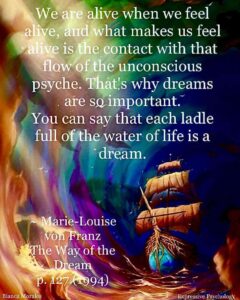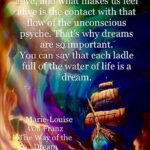 “To discover the truth of the transcendent, whether that is understood as knowing God, gaining Buddha consciousness, being in Tao, or putting on the mind of Christ, one first has to engage one’s particular religious path as if it were true.” p. 168
“To discover the truth of the transcendent, whether that is understood as knowing God, gaining Buddha consciousness, being in Tao, or putting on the mind of Christ, one first has to engage one’s particular religious path as if it were true.” p. 168
“The knowledge gained through the practice of the symbolic life changes the one who gains it.” p. 168
For those of you who resonate with the title of this post, this gem of a book is for you.
I purchased Religious But Not Religious: Living a Symbolic Life by Jungian analyst Jason E. Smith because I had to. The title and cover alone told me this was the book I’ve been waiting for for a very long time. I was right. To ignore it would have been to refuse a powerful call from my soul. Apparently I come by this naturally.
According to what I’ve been told, around the year 1834, religious dissenters from Zeeland, Netherlands immigrated to the United states to leave a particularly conservative element of the Dutch Reformed Church behind. My ancestors on my mother’s side were among them. They settled in the area around Holland, Michigan where they formed churches that felt less repressive to them. Each generation after that eased slowly and tentatively away from extreme orthodoxy into very sincere and well-intentioned, but more casual forms of observance. Most of them with a guilty conscience, I suspect.
My mother was born in Zeeland, Michigan. My father in Adrian, Michigan. Both were raised in religious homes. Mom’s parents were Methodists, Dad’s were Baptists. When I was four years old we all moved to Florida for reasons having nothing to do with religion and everything to do with their problematic relationship. But they did have one thing in common. For both of them, religion was about church. Their growing-up years had revolved around church: regular church attendance, church music, church friends, church social events, church as the source of their spirituality. But by the time we arrived in Florida, they too had eased away from the more conservative forms.
It took me 43 more years to realize that church was no longer the wellspring that replenished my spiritual hunger. By then I knew what did: Jungian psychology, and through it, the symbolic life. Jason Smith had the same experience. He articulates it in clearer language than I’ve been able to. In his words,
“To understand religion as a participation in the symbolic means shifting our perspective and seeing religion as a fluid activity instead of a fixed thing. In other words, it means distinguishing between religion and a religion. Because it presents itself in a simple and concrete form, it tends to be easier to think of religion as a thing—a set of beliefs, dogmas, or practices that one holds as a possession, or a particular group with which one identifies, such as Christianity or Buddhism. Religion as an activity, conversely, points to a way of attending to and living in relationship with the transcendent…a question that one addresses to life…a living experience of wonder…a losing of oneself in mystery, a deep participation in life that energizes and enlivens….Religion, from this point of view, then, is the lived symbolic.'” p. 60.
Does that mean that religious institutions no longer serve the needs of our souls? Not at all.
“Operating at the psychological level, religion has the capacity to initiate the individual into a conscious relationship with a set of lasting values that provides a sure and stable foundation for creative growth and development. Grounded in transcendent values, we are then less susceptible to unconsciously living by values derived solely from collective culture, on the one hand, or the shifting winds of our own impulsive desires, on the other. Both of these “default” modes of living stand ready to fill the vacuum that forms when this aspect of our being is left unattended.” p. 83.
So what does living the symbolic life mean?
“The essential element of psychological functioning is the image. More than being simply a picture in the mind, an image is a complex representation of experience…[It] contains within it, not only a quantity of information, it also reflects one’s feelings about that information, and holds it all together within a form.”p. 24.
And this:
“If I assume that religious images point primarily to physical events, I must either reject them as meaningless and absurd, as do the most dogmatic of scientific materialists, or I must accept them uncritically despite all evidence to the contrary, as do the most dogmatic of religious fundamentalists. If, however, I understand religious images such as the…burning bush, as being primarily symbolic—that is as psychic expressions of something inexpressible—then I am able to experience the reality and the truth conveyed by those images without a corresponding sacrifice of reason.”p. 25
I’m blown away by this book. I’ll always love and respect the churches and leaders that were essential to my spiritual growth during the first half of my life. And I’ll always be grateful that Jason E. Smith’s Jungian training and personal experiences gave him the understanding and language to express in 192 pages how and why my religious hunger and experiences no longer require religious authorities and a brick and mortar meeting place to be fulfilled.
“What is important is that we are able to experience a truth that brings us more alive, one that awakens the heart to love, the soul to beauty, and the mind to the wonder of life.” p. 192
Jean Raffa’s The Bridge to Wholeness and Dream Theatres of the Soul are at Amazon. E-book versions are also at Kobo, Barnes And Noble and Smashwords. Her Wilbur Award-winning book, Healing the Sacred Divide can be found at Amazon and Larson Publications.com. Her new Nautilus Award-winning book, The Soul’s Twins, is available at Schiffer, Red Feather Mind, Body, Spirit and wherever books are sold. Subscribe to her newsletter at www.jeanbenedictraffa.com.






7 Responses
A brilliant review of a brilliant book which I suspect I will need to read again and again … such is the depth and richness of Jason’s work! As soon as I saw the title I knew I would have to buy this book. I just knew! As it perfectly summed up how I felt about myself and no doubt my Self, too. And who could pull their eyes away from the almond-shaped mandorla, which instantly reminded me of your own insightful and inspiring book cover, “Healing the Sacred Divide: Making Peace with Ourselves, Each Other & the World”
Thank you for sharing this wonderful review with us Jeanie and for sharing more of your own, religious but not religious, journey with us. It was upon discovering Jung in midlife, in my forties too, that I finally understood that religious part of me. Finally, the God I once thought as outside myself, became the God on the inside, and She is amazing! I call Her Sophia, although I know She has many names. My spiritual hunger was finally fulfilled and oh how I drank, initially gulped, on the sweetest nectar ever! Love and light, Deborah.
Thank you, Deborah. I’m glad you like it. This book was also like sweet nectar…. or a fine tapestry…. A weaving together of subtle distinctions, amazing insights, helpful background information, and constant enormously satisfying confirmations of intuitions I’ve long held but find difficult to express. I don’t believe there is one page in it that doesn’t have underlines and marginalia. The lights just kept turning on and on. I rarely reread books, but this one just might have to be an exception! 🙂
Such a lovely post Jeannie thank you. It’s the experience that matters … spirit in matter I guess. Wo/man searches for meaning and as long as s/he looks outside it will be hard to find. I am eternally grateful for my psychology studies and coming upon Jungian thought in my late 30’s. The void and my own search found a home. And continues to in the inside and outside world. The cover is lovely, immediately striking and I agree with Deborah who says it reminds her of your own lovely cover. I love your quotes from this book. Love, Susan
Thank you, Susan. It really is the experience that matters…the chills up your back, the flush of sudden recognition, the lightning-flash insight, the sense of joy, awe, wonder and mystery, the awareness of having a living connection with the Other, the totally unexpected but delightful synchronicity… All these experiences are so difficult to explain to others, but to the one having them, they are very real and present and life-changing. Best of all, they build a deep and sturdy foundation of trust and faith that serves us well in times of struggle and sorrow. It’s so good to know that your ego doesn’t have to have all the answers and be in charge!! Much love, Jeanie
A great review, dear Jeane. Thank you. I know Jason Smith for many years ago, he is brilliant, and when for the first time I saw the title of this book, I love it at once! I have to get it. I wished I had such a comfortable life only to sit on a couch and read so many books! 😂🤗💖
Thank you, Aladin. Jason Smith is, indeed, brilliant. I know what you mean about not having the time to read so many books. I haven’t had that luxury in quite a while either, but I hope to this summer. I hope you will have that luxury this summer too! Blessings, and thank you for writing, Jeanie
Your kind words accompanying me and calming me down, dear Jeane. Thank you wholeheartedly my lovely angel 🙏❤